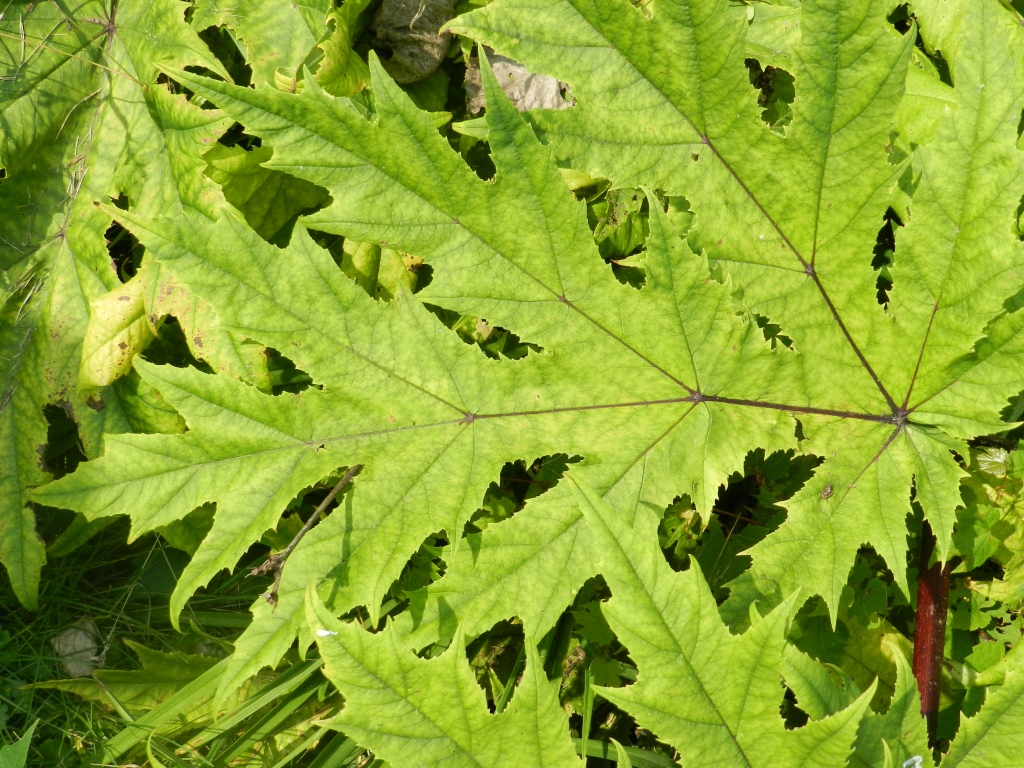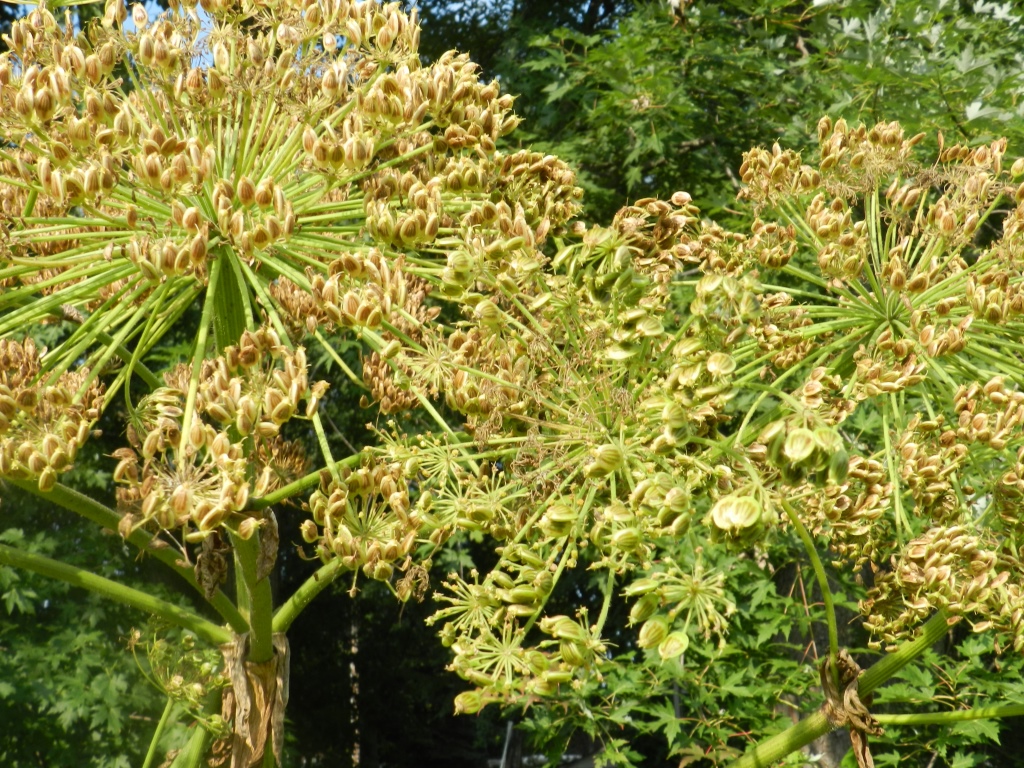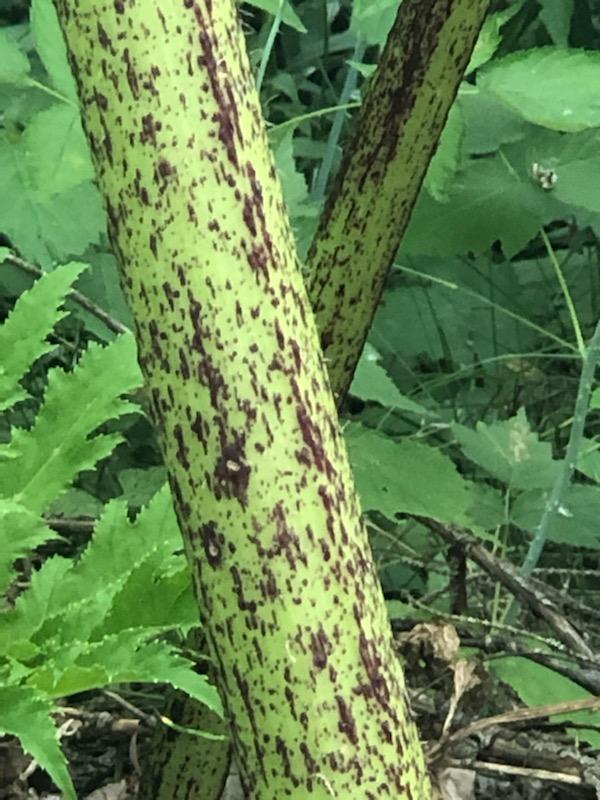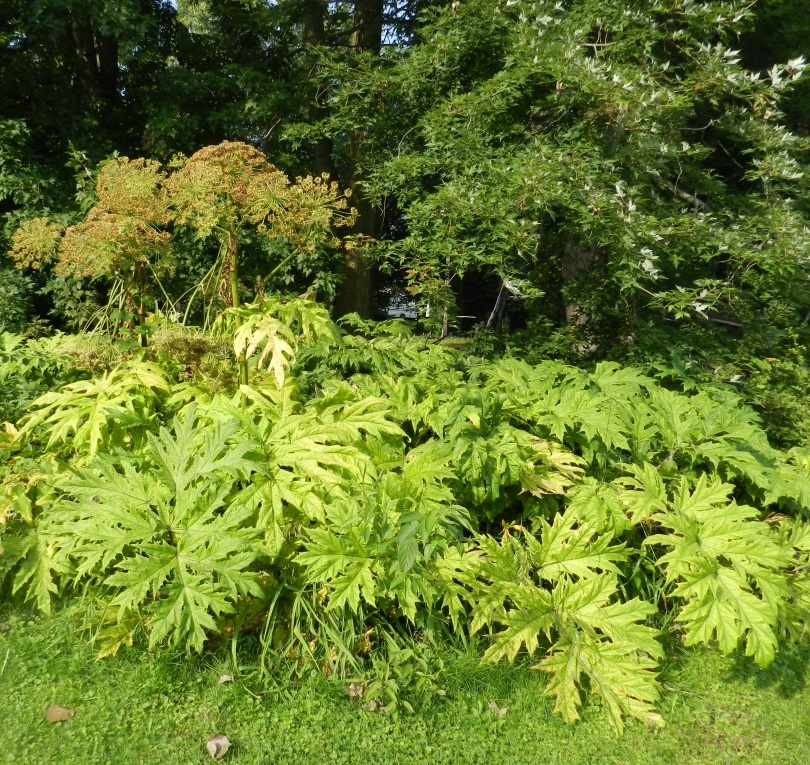
Giant Hogweed – Heracleum mantegazzianum
DOWNLOADJune 1, 2012
Proper identification will go a long way to alleviate worry about exposure and removal. Click "Download File" for a good, pictorial description of giant hogweed and look-alike species; Michigan State University Extension bulletin E-2935, “Giant Hogweed: An attractive but dangerous federal noxious weed.”
Basic Information- For more details download the file
Heracleum mantegazzianum
Apiaceae (Carrot family)
MI Status
Non-native
Life cycle
Giant hogweed is a biennial or perennial herb.
Leaves
Alternating leaves have deep irregular lobes and coarse, sharp teeth on the margins. Leaves are very large—up to 5 feet across.
Stems
The stems are hollow with coarse white hairs that are noticeable at the node and base of the petiole. They are green in color with purple blotches or specks. Stems are 2 to 4 inches in diameter and can grow up to 12 to 15 feet.
Flowers and fruit
The flower is arranged as a compound umbel with many tiny white flowers. Umbels can be 2.5 feet wide. In Michigan the plant flowers from June to August.
Seeds
Mature seed from the current year is dormant and will not germinate until the following spring. Seeds can remain viable in the soil for several years.
Toxicity
The plant exudes a clear sap that causes photodermatitis, a severe skin reaction. Exposed skin will become highly sensitive to sunlight within 24-48 hours. This may result in painful, burning blisters and red blotches that later develop into purple or blackened scars. Wash immediately with soap and water if skin exposure occurs.
Photo credits: Shiawassee Conservation District
.JPG?language_id=1)

.JPG?language_id=1)






 Print
Print Email
Email

